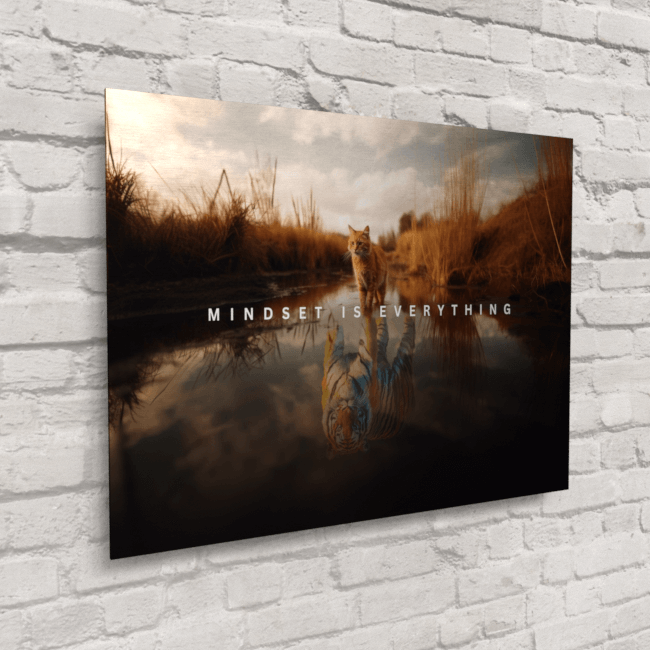The Art of Presentation: Photos on Acrylic vs. Photos on Metal
In today’s aesthetic-driven world, the medium on which a photo is printed can be as influential as the image itself. Both decorators and designers acknowledge that the substrate used for photographic prints plays a significant role in interior design and can dramatically transform the ambiance of a space. In fact, consumers are increasingly encountering two distinct choices for their high-definition photo prints – acrylic and metal. Understanding the nuanced differences between photos on acrylic and photos on metal is crucial whether you are a professional designing for clients or a consumer eager to embellish your own sanctuary.
Photos on Acrylic: A Contemporary Twist for Vibrancy and Depth
Photos encapsulated in acrylic exude a glossy, vibrant quality that is virtually unparalleled. The acrylic print process involves the image being printed onto photographic paper and then sandwiched between sheets of clear acrylic, often referred to as plexiglass. The light-permeable nature of acrylic adds a dimensional effect, giving the image a sense of depth that almost makes it pop off the wall.
Advantages of Acrylic Prints:
- Vivid Colors: Acrylic enhances the sharpness and color saturation of the photo, making it brilliant and eye-catching.
- Modern Finish: The sleek, clean lines of acrylic prints fit perfectly in contemporary settings.
- Durability: These prints are protected against dust, UV rays, and are water-resistant.
However, decorators should consider that acrylic prints can be prone to scratches, and their reflective surface may not be suited for rooms with excess light. Additionally, the weight of acrylic might necessitate sturdy mounting hardware.

Photos on Metal: Sleek, Durable, and Radiant
When it comes to presenting a photo with a sleek, industrial vibe, metal prints take the lead. The printing process for photos on metal typically involves infusing dyes directly onto coated aluminum sheets, creating a result that is both luminous and enduring.
Advantages of Metal Prints:
- Durability: Metal prints are incredibly durable, scratch-resistant, and can even be cleaned with glass cleaner.
- Lightweight: Despite their sturdiness, metal prints are lightweight, making them easy to hang.
- Luster Options: Depending on the coating, you can choose between a high-gloss finish, which amplifies color vibrancy akin to acrylic, or a matte finish, which reduces glare and offers a subtler aesthetic.
The decision between opting for a matte or glossy look can significantly affect the viewing experience, and it’s important to consider the lighting conditions of the space where the print will be displayed.
Which to Choose for Your Space?
The decision between acrylic and metal should be informed not just by personal preference but also by factors such as the location, luminosity, and existing decor of the space where the print will be placed. For instance, high-traffic areas that may expose the print to more wear and tear might benefit from the tough quality of metal. Conversely, an area that’s dedicated to showcasing vibrant artwork might be the perfect candidate for the lucid brilliance of acrylic.
For the environmentally conscious decorator or consumer, investigating the sustainability of the materials and the production processes used by the printing company could sway your decision too.
In conclusion, photo presentation beautifully bridges the gap between photography and interior design. Photos on acrylic offer a luxurious, dynamic viewing experience, whereas photos on metal provide a practical yet equally compelling aesthetic alternative. No matter which medium you choose, the union of imagery with unconventional materials can transform walls into galleries, making any space more personal and expressive.
Remember, whether you’re in the domain of decor or an avid fine-art enthusiast, understanding the interplay between photo prints and their substrates can radically redefine an area’s visual impact. Being well-informed about the characteristics of photos on acrylic vs. photos on metal will not only ensure the integrity of your designs but will also elevate the environments you wish to refine.
WHICH IS MORE COSTLY
When assessing the cost implications of choosing between photos on acrylic and photos on metal, it’s crucial to consider several factors. Generally, acrylic prints are known to be pricier due to the materials used and the complexity of the printing process. The production involves multiple layers and the cost of acrylic itself is higher than that of metal. However, metal prints, while initially seeming cost-effective, can vary significantly in price based on the quality of the aluminum and the finish chosen. High-quality, coated aluminum designed for superior dye adhesion and longevity can narrow the price gap between the two options.
Ultimately, the decision should balance budget considerations with the desired aesthetic and durability requirements of the space. It’s advisable for consumers to carefully compare the long-term value each medium provides, beyond just the initial investment, given their respective lifespans and the visual impact they offer.





